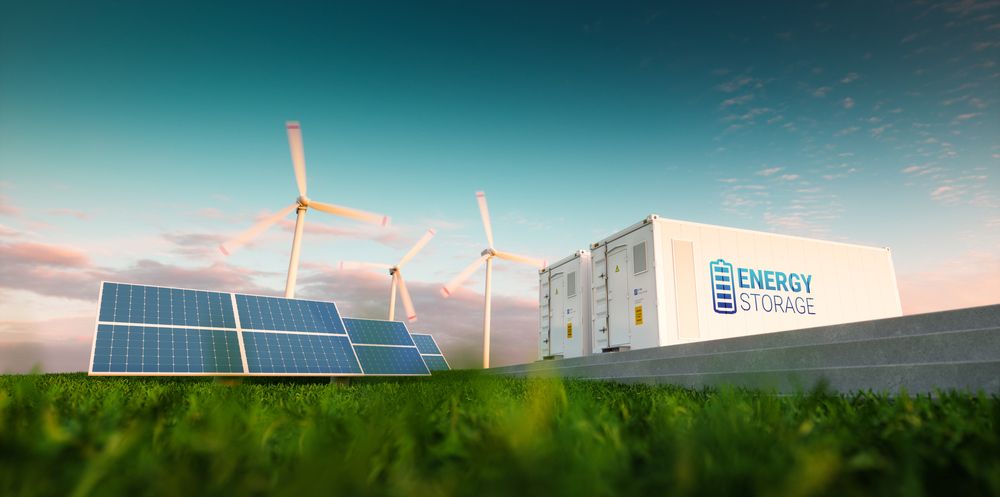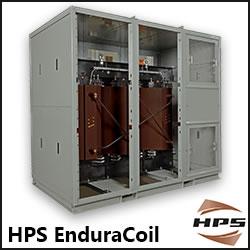With enough energy storage on the grid, we will no longer have to size infrastructure to the highest peak. We can reduce system inefficiencies, improve utilization of assets, and lower the cost to the ratepayers.
 Energy Storage Technology: A Vital Component of a Modern Power Grid
Energy Storage Technology: A Vital Component of a Modern Power Grid

Jacqueline De Rosa is Vice President of Power and Energy Storage, at | Ameresco Inc
Integrating advanced energy storage solutions into the electric power grid’s resource mix enhances resiliency and reliability by modernizing the way we produce and deliver electricity. With enough energy storage on the grid, we will no longer have to size infrastructure to the highest peak. We can reduce system inefficiencies, improve utilization of assets, and lower the cost to the ratepayers.
Over the past decade, the storage industry has worked persistently to ensure energy storage technology treatment is on a level playing field with conventional generation solutions. In 2024, more than 37,000 MWH of new energy storage capacity was added in the United States, a year-over-year increase of 34% from 2023. Industry analysts anticipate that through 2025 the momentum will continue with over 50,000 MWH in new storage capacity coming online. As monumental an achievement these numbers are, this record-breaking growth represents only a fraction of the storage that is needed to meet surging load forecasts driven by power-hungry industries like data centers, advanced manufacturing, electric vehicles, and broader electrification.
Unfortunately, despite strong growth trajectories, the storage industry has not been immune to volatile conditions and challenges in today’s uncertain market environment. Energy storage systems rely on international manufacturing of battery components and are directly impacted by new tariffs. Understandably, many utilities have had to pause the pace of their energy storage procurement until they can fully digest the consequences of shifting tariff conditions. The financial community also needs time to evaluate the implications of the tariffs, as well as new regulatory frameworks governing tax credit eligibility. While the impact may not yet be felt by the average consumer, this high level of uncertainty has introduced risk which affects construction timelines, costs, and possibly the provision of affordable reliable electric power.
Now as recent energy storage headways are running into externally imposed market headwinds, it is imperative to showcase real-world outcomes that illustrate how energy storage projects are already effectively reducing utility costs, advancing decarbonization on a global scale, and supporting regions that may be lacking sufficient distribution or transmission infrastructure to ensure reliable service. Combined with the recently established certainty of the continuation of the investment tax credit for energy storage, it is time to move forward once again.
The following examples showcase how BESS projects are already transforming our communities and delivering lasting value.
BESS Delivers Value Throughout North America
The City of Santa Clara, located in Northern California’s Silicon Valley, is now a hub for data centers. Within the less than 20 square miles of city limits, there are already more than 50 data centers, and the number is bound to increase provided the local utility can supply the needed power. The City’s municipal-run electric utility, Silicon Valley Power (SVP), estimates the city’s load will double to 1300 MWs in the next decade as data center developers are drawn to locate new project where they can benefit from the lower power costs available in this city at the geographic center of the tech industry.
SVP’s resource plan includes numerous creative solutions to serve their fast-growing load. One key project, the Kifer Energy Storage project, is a 50 MW/200 MWH BESS currently under construction by Ameresco. Located directly in the City of Santa Clara, Kifer Energy Storage will play a crucial role in serving data center load while maximizing SVP’s use of renewable energy resources. The energy storage project will also participate in the California ISO markets, assist in balancing generation and consumption, reduce congestion, and regulate voltage and frequency, providing a multitude of grid benefits in a single economically attractive package.
As California’s nears its deadline for achieving 60% carbon-free energy and SVP targets 40% emissions cut, Kifer Energy Storage demonstrates how BESS projects can support the energy demands of a highly digitalized society while ensuring long-term sustainability. Utilizing energy storage to integrate renewable energy, the Kifer Energy Storage project can help ensure that future generations can thrive in a safer, healthier environment.
Cost Effective Solution for Rural Customers
Another successful BESS project involves a deployment for a rural electric cooperative in Colorado’s northern Front Range. The project, by Ameresco and United Power, involves eight distinct BESSs at substations in United Power’s service territory. Together the projects amount to 78.3MW/313.34 MWH of battery storage capacity to help mitigate generation and transmission costs.
Facing rising energy costs brought on by extreme weather and supply disruptions, the system helps the state draw power from the main grid when rates are lowest, storing excess energy for high-demand periods. The United Power and Ameresco substation energy storage projects are accelerating the state’s energy transition (100% carbon-free electricity generation by 2040) while delivering long-term cost savings.
Industry’s Importance in Job Creation
The U.S. energy storage industry comprises hundreds of companies and tens of thousands of American workers that manufacture, distribute, and install residential, commercial, and utility-scale energy storage systems across the country. This includes many different types of workers —construction labor, electricians, engineers, software developers, commissioning experts, and numerous other specialties all working in the energy storage arena.
Further, an industry-wide planned $100 billion investment in American-made grid batteries, will not only be a step forward for American energy independence, but a catalyst for 350,000 new jobs, revitalized manufacturing communities across the country, and strengthened U.S. energy generation and transmission networks.
Looking Ahead
From Silicon Valley to the Colorado front range, energy storage technology is a cost-effective component of the overall power grid’s resource mix that will help meet unprecedented load growth. We need to remove the barriers that impair the advancement of this essential industry. Fortunately, the energy storage industry itself is resilient and will continue to push for success.
Jacqueline De Rosa is Vice President of Power and Energy Storage, at Ameresco Inc, a leading energy solutions provider. With more than 1,500 employees in North America and Europe, Ameresco aims to help customers reduce costs, enhance resilience, and leverage renewables for unique energy needs.
The content & opinions in this article are the author’s and do not necessarily represent the views of AltEnergyMag
Comments (0)
This post does not have any comments. Be the first to leave a comment below.
Featured Product

